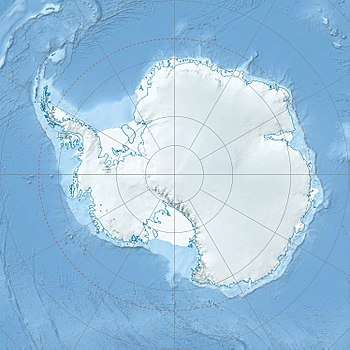Queen Fabiola Mountains
Queen Fabiola Mountains is a group of mountains in Antarctica, 50 kilometres (30 miles) long, consisting mainly of seven small massifs which trend north-south, forming a partial barrier to the flow of inland ice. The mountains stand in isolation about 140 km (90 mi) southwest of the head of Lutzow-Holm Bay. The mountains were discovered and photographed from aircraft by the Belgian Antarctic Expedition under Guido Derom on 8 October 1960. With permission from King Baudouin of Belgium, the mountains were named after his newly wedded wife Fabiola. In November-December 1960, the mountains were visited by a party of the Japanese Antarctic Research Expedition (JARE), 1957–1962, which made geomorphological and geological surveys. They applied the name Yamato Mountains.[1] The highest massif is Mount Fukushima (2,470 m).

The Japanese Antarctic Research Expedition (JARE) found the Yamato 000593 Martian meteorite in 2000 on the Yamato Glacier, at the Queen Fabiola Mountains.[2] With a mass of 13.7 kg (30.2 lb), Yamato 000593 is the second largest meteorite from Mars found on Earth.[2][3][4]
See also
References
- U.S. Geological Survey Geographic Names Information System: Queen Fabiola Mountains
- Webster, Guy (February 27, 2014). "NASA Scientists Find Evidence of Water in Meteorite, Reviving Debate Over Life on Mars". NASA. Archived from the original on 2014-03-01.
- White, Lauren M.; Gibson, Everett K.; Thomnas-Keprta, Kathie L.; Clemett, Simon J.; McKay, David (February 19, 2014). "Putative Indigenous Carbon-Bearing Alteration Features in Martian Meteorite Yamato 000593". Astrobiology. 14 (2): 170–181. doi:10.1089/ast.2011.0733. PMC 3929347. PMID 24552234. Retrieved 2014-02-27.
- Gannon, Megan (February 28, 2014). "Mars Meteorite with Odd 'Tunnels' & 'Spheres' Revives Debate Over Ancient Martian Life". Space.com. Archived from the original on 2014-03-01.
![]()
![]()